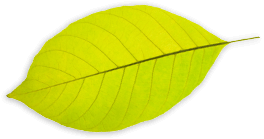Royal Raindrops

A hardy and colorful crabapple
WHEN YOU’RE LOOKING for a beautiful small, spring flowering tree, there are more trees to choose from than just the classic flowering dogwoods. One option is the flowering crabapple. These trees were once considered messy and disease-prone, but modern crabapple varieties have excellent disease resistance, so don’t immediately rule them out.
Royal Raindrops is one such variety, offering bright pink flowers in April followed by deeply cut purple leaves that fade to burgundy shades for the summer. Fall foliage turns a beautiful orange-red. In the winter, green crabapples turn red. These are a lot of great characteristics in one small tree.
Crabapples are much tougher than once believed. In the past, their susceptibility to foliage diseases made them appear weak and unhealthy looking by late summer. But not anymore. Besides Royal Raindrops, Sparkling Sprite, Prairifire and Firebird are just a few tough modern varieties with excellent disease resistance.
These specific varieties typically grow to a maximum height of less than 20 feet. They have a classic rounded canopy that’s not too wide—usually around 15 feet—offering consistent, bright and abundant flowering, reliable fall color and a colorful winter fruit show. Fruit is more persistent, meaning it stays on the tree once ripe and doesn’t fall to the ground, making a mess, as many older varieties did. The fruit is also a favorite wintertime food for birds.
For the healthiest crabapples, plant in full sun in an area with good air circulation. Avoid planting near junipers or cedars to prevent cedar-apple rust, a common fungus. Avoid pruning during the spring rainy season to prevent spread of fireblight. Once established, crabapples can be tough, drought-resistant trees that will reward you with consistent, beautiful spring flowers for years to come.

